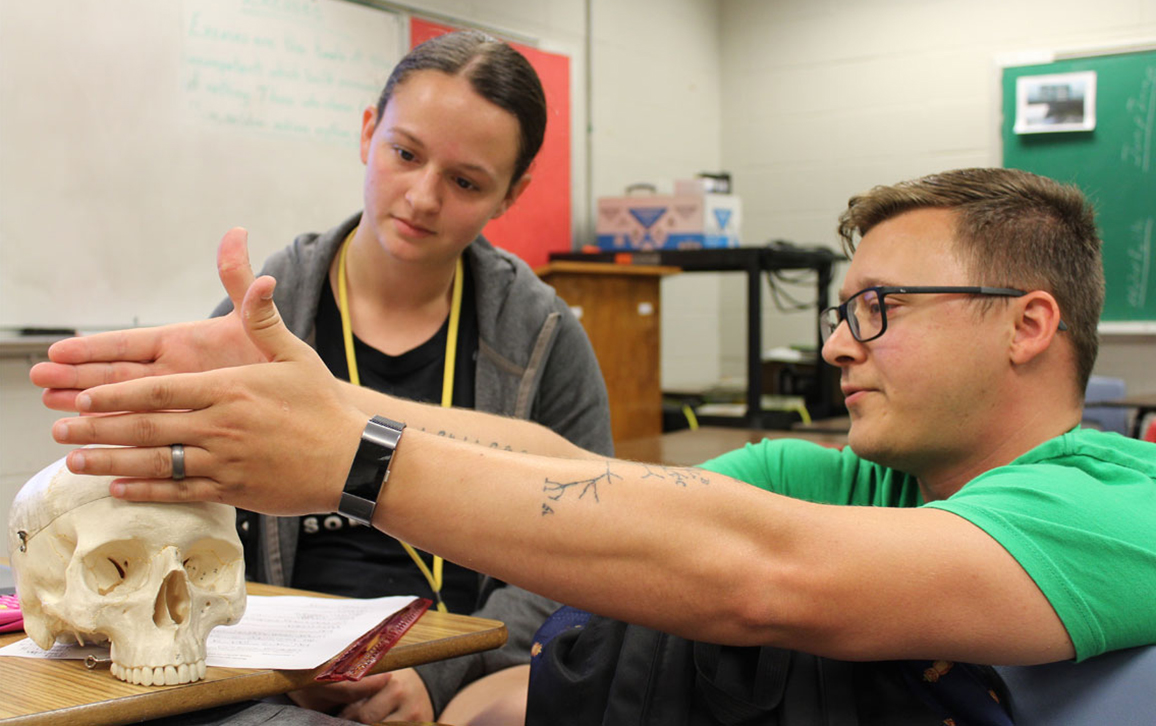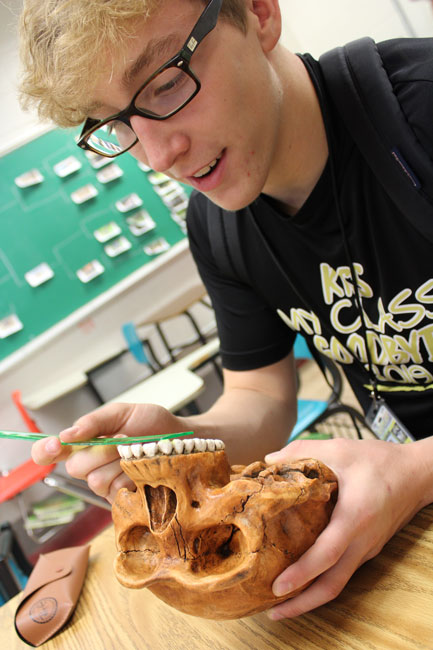Human Evolution Belongs in the Science Classroom
By Glenn Branch
Svante Pääbo’s Nobel Prize–winning research on the Neanderthal genome is a timely reminder of the topic’s potential for engaging students.
December 8, 2022
Macroscope Biology Evolution
Svante Pääbo, the scientist who sequenced the Neanderthal genome, was recently awarded the Nobel Prize for Physiology or Medicine in 2022 for his research on human evolution. “By revealing genetic differences that distinguish all living humans from extinct hominins,” the Nobel Assembly explained, “his discoveries provide the basis for exploring what makes us uniquely human.” Surely such exciting science, now with the luster of a Nobel Prize, is appropriate for the high school biology classroom.
Of course, not all Nobel Prize–worthy science is appropriate for the classroom. Quantum chromodynamics is a rare visitor there, even though three American physicists won a Nobel Prize for Physics in 2004 for contributions to the field: High school students simply lack the background to understand it. Yet Pääbo’s work is accessible to students, at least in broad strokes: Indeed, his work was in wide educational use well before the Nobel Assembly’s announcement, including in the textbook Biology Now.

But teaching human evolution is often challenging. Evolution is notoriously controversial among the American public—and human evolution is especially so. In a 2016 poll, researchers found that only 52 percent of Americans agreed with the statement that “humans, as we know them today, descended from earlier species of animals,” while 74 percent agreed with the same claim with “elephants” substituted for “humans.” When it comes to evolution, almost a quarter of the public apparently draws the line at humans.
Human evolution was initially the main target of legislation aiming to inhibit the teaching of evolution. Indeed, the very first antievolution law proposed in the United States, Kentucky’s House Bill 191 from 1922, would have prohibited the teaching of “Darwinism ... or evolution as it pertains to the origin of man” in the state’s public schools. Pääbo’s work would have been forbidden in schools in Tennessee, Arkansas, and Mississippi until statutory bans were repealed or overturned between 1967 and 1970.
As a result of the social controversy over human evolution, a significant number of teachers have been reluctant to risk backlash by teaching the topic. A 2012 study of public high school biology teachers in Missouri found that almost 70 percent of them devoted less than a full class hour to human evolution, or failed to address the topic at all. Two bills aimed at inhibiting the teaching of evolution were introduced in the Missouri legislature in the same year, although neither was enacted.
State science standards, which specify what knowledge and skills students are expected to acquire, are often a shield for science teachers facing challenges to particular topics in the curriculum. Oddly, although the treatment of evolution in state science standards is generally improving, the treatment of human evolution is declining. The influential Next Generation Science Standards, adopted in 20 states (plus the District of Columbia) since 2013, include no discussion of human evolution at all.

Sometimes the absence of human evolution from state science standards results in its absence from the classroom. According to a 2018 dissertation by Karmen Melissa Stephenson on science education in Tennessee, high school teachers reported that administrators communicated support for teaching evolution—but only for the topics specifically covered in the standards. One of the state’s district-level administrators “specifically discouraged coverage of anything relating to the origins of life, human origins, or human evolution,” wrote Stephenson.
Despite these obstacles, there are encouraging signs. A national survey by researchers at the National Center for Science Education and Penn State University found that between 2007 and 2019, the average time that public high school biology teachers devoted to teaching human evolution almost doubled, from 4.1 to 7.7 class periods. The average time devoted to teaching evolution in general increased over the same period as well, but not nearly so dramatically.
So, even with human evolution absent from state science standards, biology teachers seem to realize that human evolution provides a particularly “enjoyable, engaging, and effective way to teach core evolutionary concepts,” as the Smithsonian paleoanthropologist Briana Pobiner urged in a 2016 article. A focus on human evolution helps students see evolution as personally meaningful, she explained, wryly adding that it “takes advantage of adolescent students’ enormous self-interest.”
Human evolution is accordingly at the center of No More Monkeying Around, a freely available lesson set developed by the National Center for Science Education as part of a suite of resources intended to help biology teachers address the most common misconceptions about evolution that students bring to the classroom. Throughout the lesson set, students are guided to investigate the evidence for human evolution for themselves, following the inquiry-based learning approach of the Next Generation Science Standards.
In his 2014 book Neanderthal Man, Pääbo expressed hope that his work comparing the human and the Neanderthal genomes will contribute toward a solution to “one of the most fascinating, perhaps even one of the most pressing, problems that scientists face today”: explaining what makes humans unique. Students will need no encouragement to want to explore such a significant question in their science classrooms—but their teachers continue to need resources and support to help them to do so.
American Scientist Comments and Discussion
To discuss our articles or comment on them, please share them and tag American Scientist on social media platforms. Here are links to our profiles on Twitter, Facebook, and LinkedIn.
If we re-share your post, we will moderate comments/discussion following our comments policy.